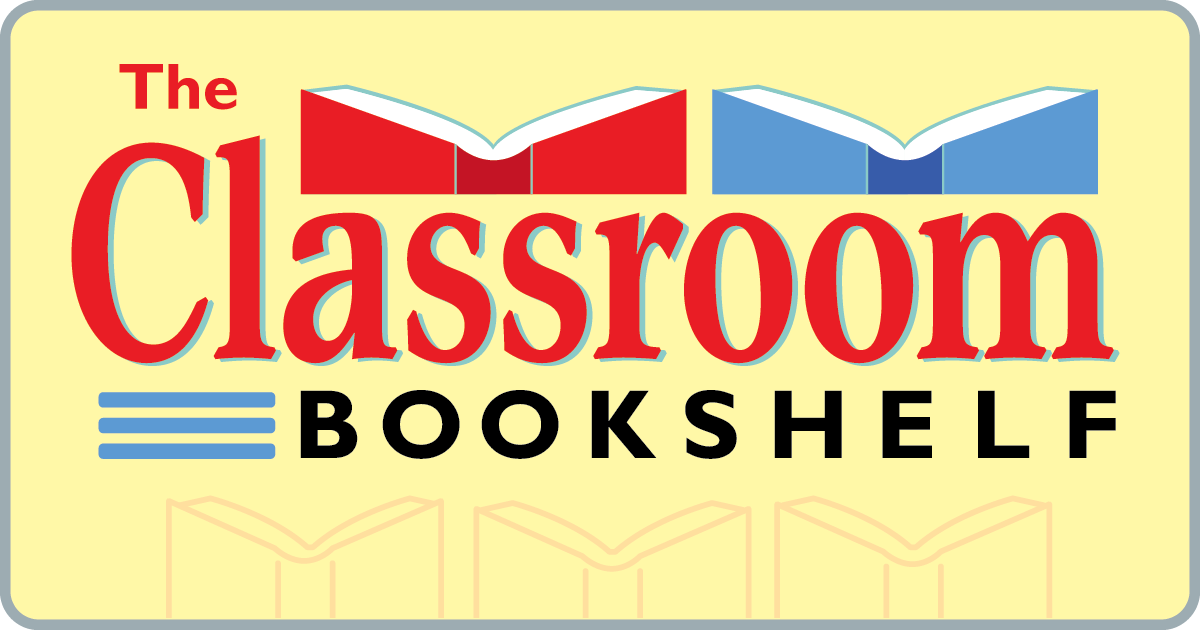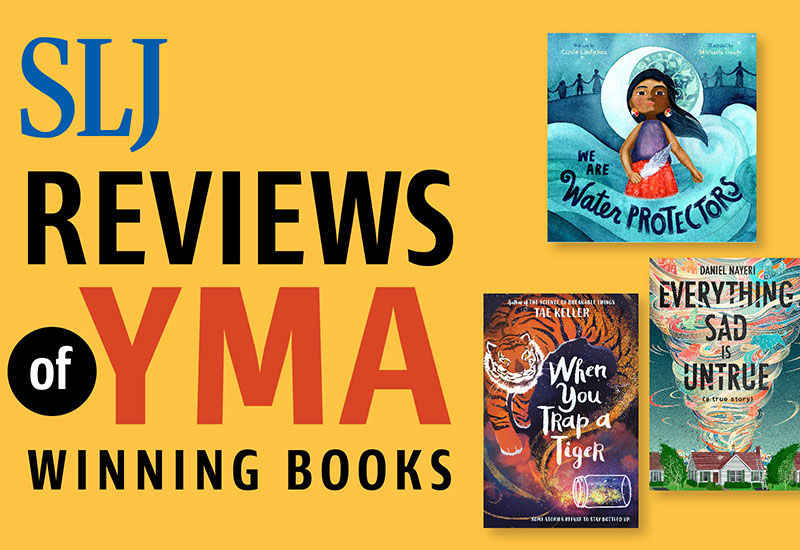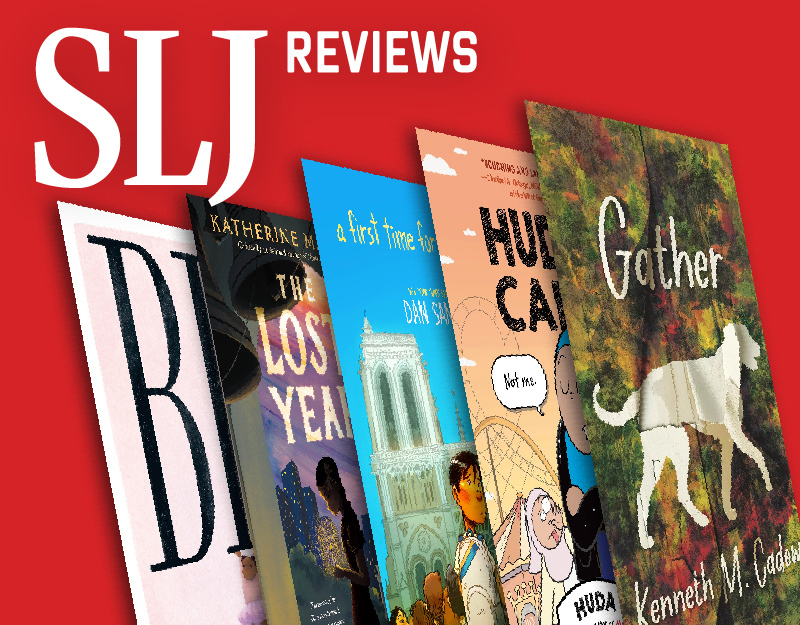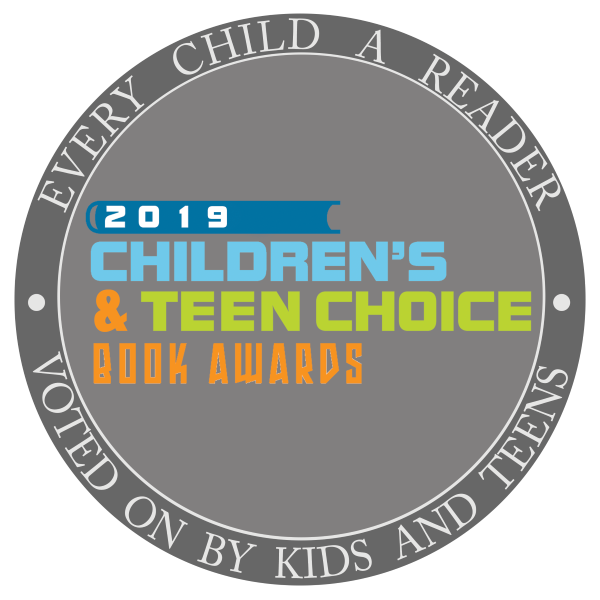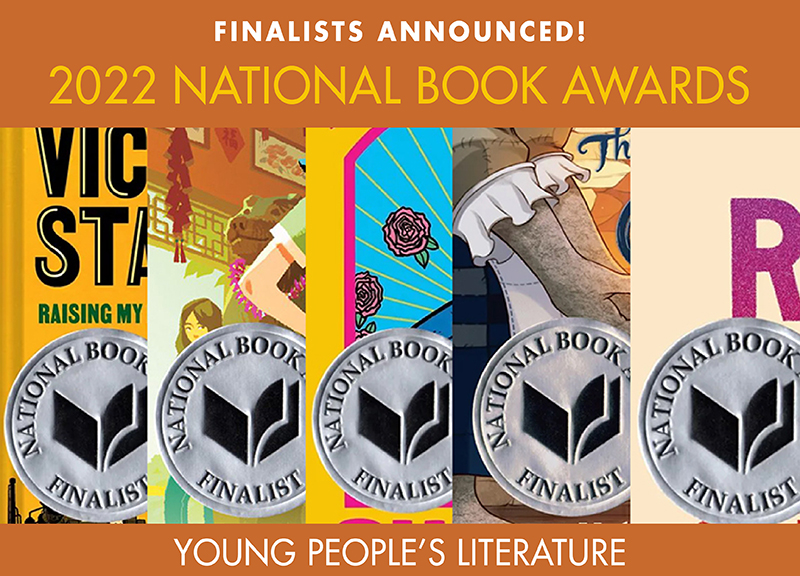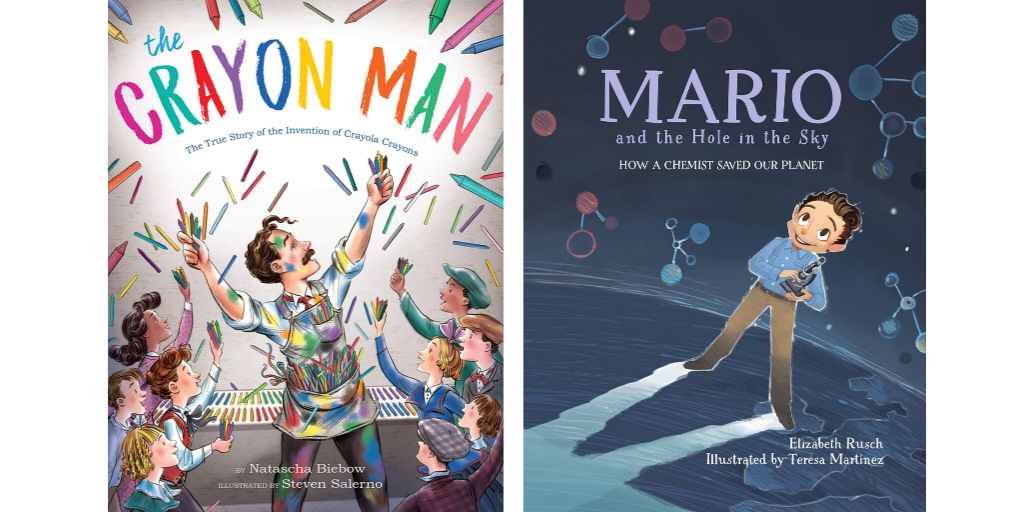Life’s Simple Problems Are Solved with the Help of Steadfast Friends in Amos McGee Misses the Bus: Teaching Ideas for this Much-Awaited Sequel

Amos McGee Misses the Bus
Written by Philip C. Stead and Illustrated by Erin E. Stead
Roaring Brook Press 2021
ISBN 978-1-250-21322-8
Grades PreK-3
Book Review
“There can be so many nice surprises in a day.” After over a decade, the much-awaited sequel to the Caldecott-winning A Sick Day for Amos McGee has arrived–and at just the right time. The return of fastidious zookeeper Amos and the beloved animals he cares for feels like coming home to an old friend. In Amos McGee Misses the Bus, Amos is too excited to sleep and lays awake planning an outing for the zoo animals. He wakes up when the alarm clock clangs and puts on his pea-green, freshly-pressed uniform that readers of the first book will recognize. As punctilious as Amos is, sometimes a lack of sleep presents a simple problem–after all, Amos is only human. First, he falls asleep at the kitchen table waiting for his morning tea (despite forgetting to light the stove). Then, he dashes out the door without his lunchbox, loses his favorite hat, and misses the number five bus. Finally, Amos arrives late to the zoo and apologetically explains what happens to his friends–the elephant, penguin, rhinoceros, owl, and tortoise–all recurring from the first book. While Amos naps on a bench, his animal friends take care of his chores at the zoo. Amos wakes up to see that the tortoise has even found his missing hat. The day is not lost–it’s only just beginning–and Amos and his animal friends are able to enjoy the outing Amos worked so hard to plan. In this equally quiet sequel, Philip and Erin Stead have created a world where caring and kindness take center stage. Once again, the illustrations complement the quiet storyline of reciprocal kindness. With her signature woodblock prints overlaid with delicate pencil work, Erin Stead provides a limited, muted color palette that creates a sun bleached effect reminiscent of picturebooks from an earlier era. Philip Stead’s text complements his wife’s artwork, highlighting the themes of friendship and much-needed reassurance that even when life’s simple problems arise, we can still find joyful surprises.
Teaching Ideas: Invitations for Your Classrooms
Note to our Readers: These ideas are not meant to be prescriptive. Choose one. Choose more. It’s up to you. Some ideas are bigger and will take a number of days to complete. Some are shorter. You can also choose to complete one part of a teaching idea, but not the whole thing. It’s up to you!
ADVERTISEMENT
ADVERTISEMENT
Character Mapping to Boost Vocabulary. Using both Amos books, create a character map for Amos that describes his strengths, personality, habits, and challenges. Then, support students to grow in their vocabulary knowledge to more specifically describe Amos and/or to identify synonyms for the words they initially identified. For example, we could describe Amos as kind, but we could also say he is compassionate, caring, amiable, considerate, gracious, good-natured, and generous. We could describe Amos as tired in the second book, but we could also say he is drowsy, sleep-deprived, fatigued, weary, worn out, and spent. Create word webs using sticky notes or word clusters to deepen their thinking about character traits and how we describe characters. Use this technique for other complex characters you encounter in your read-alouds all year long.
Asking “How Can I Help Others?” and Making a Plan. Amos is a character who thinks of others and makes a plan for how to bring joy to their lives. The cast of his animal friends share that same capacity for care. Invite students to notice the ways Amos and the animals help one another in small ways. How could they help others in their own lives? Invite students to select someone in their life that they would like to help either at home or at school. Like Amos does, invite students to plan for how they will help either by making a list or drawing a plan of action. Challenge students to surprise that person by helping them in an unexpected way. Invite students to share out what they did and what happened during Morning Meeting or Closing Circle throughout the next week.
Navigating Life’s Simple Problems. Amos is a character who encounters simple problems in life. In the first book, he gets sick and it derails his plans. In the second book, he stays up late planning a surprise for his friends and misses the bus. In both books, these simple problems remind us that Amos is human, like us. Invite students to share their thinking about some of life’s simple problems that they have encountered and how they solved them. Use this as an opportunity to talk about the consequence of not getting enough sleep and how it impacts whether we are ready in the morning. Particularly encourage students to consider how life’s simple problems are often solved thanks to the help of others–be it friends or even strangers.
A Day in the Life. We know that zoo keepers can’t really take zoo animals out of the zoo on special outings to the beach. Nor can animals help people in the ways the animals do in Amos Misses the Bus. But what do zookeepers do? How do they care for animals with compassion, kindness, and technical expertise? Using the resources from the National Association of Zoo Keepers and various zoos below, research some of the responsibilities of zoo keepers. If possible, arrange a live or Skype interview with a zoo keeper at a local or national zoo. Have students create posters that show how zoo keepers take care of a particular animal, complete with illustrations. Also use this as an opportunity to discuss the responsibilities zoo visitors have to keep the animals safe by following the rules of the zoo. Investigate with students new stories of what happens when visitors have not followed the rules and the ways animals suffer. (A version of this invitation first appeared in our entry for A Sick Day for Amos McGee.)
Exploring Craft Techniques. Invite students to closely read at the sentence level taking notice of how Philip Stead uses language and punctuation to craft this gentle story. Thanks to his choices as an author, readers are both intrigued and comforted by the sequence of events.
Support students to notice how he uses all-caps, dialogue, ellipses, and a variety of sentence structures to create a steady and comforting effect. Invite students to select their favorite sentence and to notice what makes it effective such as the use of an initial clause, a sequence of three items listed, or the use of compound and complex sentences. Support students to grow in their use of academic language when describing their favorite sentences and how the order of the words matters.
Sequels and Series. Read aloud both Amos books and invite students to compare and contrast the two stories. How are they similar? What is recurring? What is different? Create a Venn diagram or three-column T-chart to document students’ thinking. Invite students to consider why they think Philip and Erin Stead wanted to create a sequel for the character of Amos. What makes him and the cast of animal characters sequel-worthy? Used shared or interactive writing, have students imagine that they are the new authors of the next book in an Amos series! As a class, create the next book in the Amos series. First, Amos got sick. Then, he stayed up too late and missed the bus. What could happen to Amos next that seems likely or plausible? What type of simple life problem might he encounter? Plan the story with students and either as a class, in partnership, or independently have students write the next tale about this beloved main character and his animal friends.
ADVERTISEMENT
ADVERTISEMENT
Collaborative Picturebook Making. Philip and Erin Stead have complemented one another’s strengths as picturebook creators in the Amos books as well as Bear Has a Story to Tell and Lenny and Lucy. Invite students to create picturebooks together with a partner. First, support students to learn more about the characteristics of picturebooks, such as the typical format of 32 pages, the use of endpapers, as well as techniques employed in Amos McGee Misses the Bus like double-page spreads, single page illustrations, the effect of page turns to create pacing, and the use of a gatefold. Have them investigate the work of collaborative picturebooks “pairs” like Philip and Erin Stead, Candace Fleming and Eric Rohman, Leo and Diane Dillion, or Jennifer and Matthew Holm. How do they want to handle the responsibilities of writing and art making? How will their writing and artwork create a message of meaning and purpose like the Amos books do? What kinds of special features do they want to add for effect that they see used in the Amos books? Once students have drafted and revised their creations, celebrate with a book party and invite other classes for a special reading event.
Woodblock Prints. In both Amos books, Erin Stead uses woodblock printing as an initial art making process. Invite students to notice how she uses the same limited palette in both Amos books and explain how she used woodblock printing to create all of the color and then used pencil over the prints to add the delicate details we see. Partner with the school’s art teacher to have students explore the method of woodblock printing overlaid with pencil drawing. If woodblock printing is not available, invite students to create simple prints with a limited palette from linoleum or everyday materials like sponges or even apples or potatoes. Then, have students use pencil to add detailed drawings to their artwork to create animals or people or trees following in the footsteps of Erin Stead.
Mock Caldecott. The first Amos book won the prestigious Caldecott Award in 2011. Partner with your school librarian and gather 15-20 picture books published in 2021, culling titles from some of the best book lists and this blog. Review the Caldecott Medal criteria available on the ALA webpage and post it in your room. Spend a week having your students reading the picture books in small groups, applying the criteria, and taking notes. Have each small group come to consensus on their top five books to nominate. Use their choices to narrow the field of contenders. Next, ask each group to choose two favorites from the remaining titles; the group should prepare a clearly articulated rationale for why the illustrations are worthy of being recognized with the Caldecott Medal. After hearing from each group, the class should vote for a winner. The 2022 American Library Association awards will be announced on Monday, January 24th. (This invitation first appeared in our entry for A Sick Day for Amos McGee.)
“Message Books” Text Set. Some authors know how to craft a story that allows us to figure out the message without didacticism. Classic children’s book authors like Arnold Lobel of Frog and Toad and Leo Leonni of Frederick and Matthew’s Dream remain some of the most poignant examples of message books. More recent titles include Lost and Found and The Heart and the Bottle by Oliver Jeffers, Mac Barnett and Jon Klassen’s collaboration Extra Yarn, Julian is a Mermaid by Jessica Love, After the Fall: How Humpty Dumpty Got Back Up Again by Dan Santat, Little Fox in the Forest by Stephanie Graegin, Shelter by Celine Claire, and The Rabbit Listened by Cori Doerrfeld. Gather together a “message books” text set to explore with students their responses to the characters and storylines. What are the messages these authors and illustrators offer us for how to live our lives with meaning and purpose? How is a message slightly different from a moral such as in Aesop’s fables? In what ways do the Amos books support readers to take away a message about kindness and friendship without moralizing? (A version of this invitation first appeared in our entry for The Rabbit Listened.)
Further Explorations
Online Resources
The Stead Collection
Philip Stead
Erin Stead
NPR Interview with Erin and Philip Stead
https://www.npr.org/2021/12/11/1062100800/amos-mcgee-misses-the-bus-sequel-picture-book
Caldecott ALA Site
https://www.ala.org/alsc/awardsgrants/bookmedia/caldecott
2022 ALA Awards
https://www.ala.org/news/mediapresscenter/presskits/youthmediaawards/alayouthmediaawards
The American Association of Zoo Keepers
The Bronx Zoo
The National Zoo
San Diego Zoo
A List of Lists! 52 Best Children’s Book List of 2021
Books
Barnett, M. (2012). Extra yarn. New York, NY: Balzer & Bray.
Claire, C. (2017). Shelter. Toronto, Canada: Kids Can Press.
Doerrfeld, C. (2018). The rabbit listened. New York, NY: Dial Books.
Graegin, S. (2017). Little fox in the forest. New York, NY: Schwartz & Wade Books.
Jeffers, O. (2010). The heart and the bottle. New York, NY: Philomel Books.
Jeffers, O. (2005). Lost and found. New York, NY: Philomel Books.
Leonni, L. (1991). Matthew’s dream. Decorah, IA: Dragonfly Books.
Leonni, L. (1967). Frederick. New York, NY: Pantheon Books.
Lobel, A. (1972). Frog and toad together. New York, NY: HarperCollins.
Lobel, A. (1970). Frog and toad are friends. New York, NY: HarperCollins.
Santat, D. (2017). After the fall: How Humpty Dumpty Got Back Up Again. New York, NY: Roaring Brook Press.
Stead, P. (2012). Bear has a story to tell. New York, NY: Roaring Brook Press.
Stead, P. (2015). Lenny and Lucy. New York, NY: Roaring Brook Press.
Stead, P. (2016). Ideas are all around. New York, NY: Roaring Brook Press.
Stead, P. (2010). A sick day for Amos McGee. New York, NY: Roaring Brook Press.
Filed under: Book Reviews, Fiction, Fiction Picture Books, Picture Books
About Katie Cunningham
Katie is a Professor of Literacy and English Education at Manhattanville College. There she is also the Director of the Advanced Certificate Program in Social and Emotional Learning and Whole Child Education. Her work focuses on children’s literature, joyful literacy methods, and literacy leadership. Katie is the author of Story: Still the Heart of Literacy Learning and co-author of Literacy Leadership in Changing Schools. Her book Start with Joy: Designing Literacy Learning for Student Happiness will be released September 2019. She is passionate about the power of stories to transform lives.
ADVERTISEMENT
ADVERTISEMENT
SLJ Blog Network
Newbery/Caldecott 2025: Spring Check-In
Ellen Myrick Publisher Preview: Spring 2024 – Cicada, Creston, Diamond, and Eye of Newt
Number Call | Review
It’s Time for More Mock Newbery Suggestions
Navigating the High School and Academic Library Policy Landscape Around Dual Enrollment Students
Book Review: Dispatches from Parts Unknown by Bryan Bliss
ADVERTISEMENT

